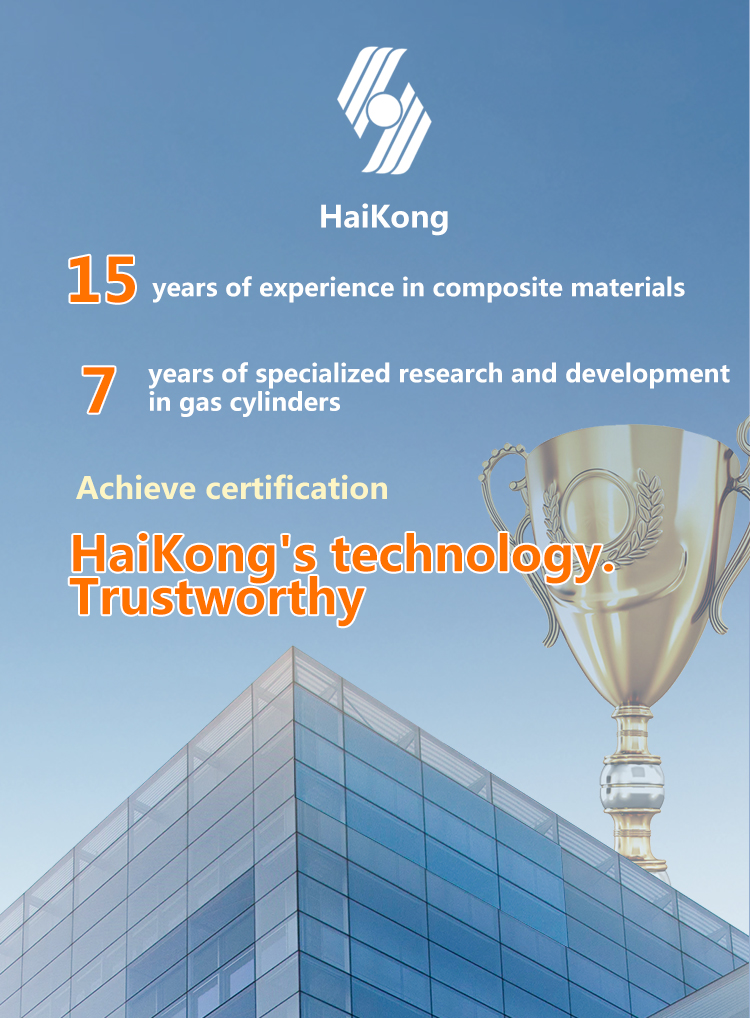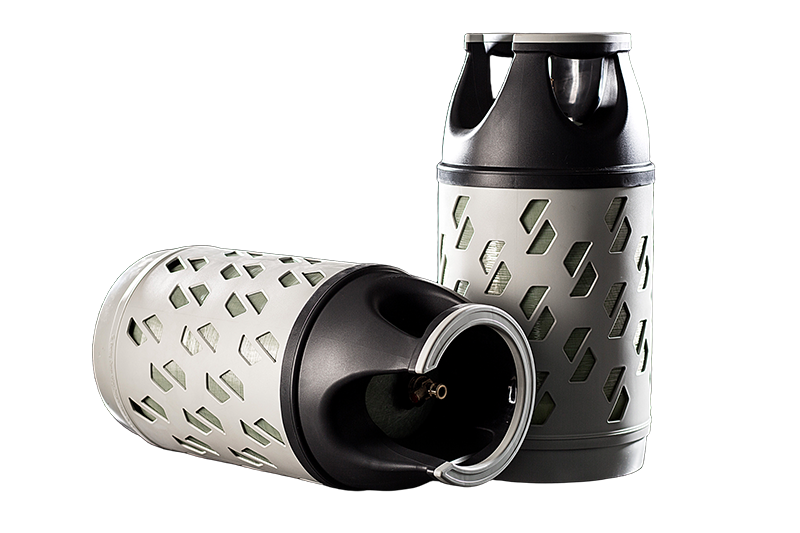Material and Technology Innovation: The development of composite material hydrogen storage tanks relies on the development of high-performance materials, such as carbon fibers and glass fibers, to enhance lightweight, strength, and corrosion resistance. For example, carbon fibers, due to their high strength and lightweight properties, have become a mainstream material. Additionally, the development of advanced matrix materials and process optimization are continuously advancing to reduce costs and improve performance.
Lightweight and High-Pressure Development: The trend in the development of composite material hydrogen storage tanks is toward lightweight, high-pressure, high hydrogen storage density, and long service life. Compared to traditional metal materials, composite materials can reduce tank wall thickness while maintaining the same pressure rating, thereby increasing capacity and hydrogen storage efficiency. For example, Type IV hydrogen storage tanks, due to their lightweight and fatigue resistance, have become a research focus.
Market and Application Expansion: With the rapid development of the hydrogen energy industry, the application fields of composite material hydrogen storage tanks are continuously expanding, including aerospace, automotive, marine, and industrial sectors. For example, Airbus is developing new aircraft and plans to use carbon fiber composite material hydrogen storage tanks as part of the fuel system.
Policy and Standard Promotion: Government and international organizations' support for hydrogen and composite materials is driving the development of hydrogen storage tank technology. For example, Japan, the United States, and Europe are leading in hydrogen strategy and standard-setting efforts.
Market Outlook and Investment: The global market for composite material hydrogen storage tanks is expected to continue growing. It is projected that by 2030, the global hydrogen storage market will reach $130 billion, with increasing demand for composite material hydrogen storage tanks. Industry reports predict that the industry will have significant uncertainty in the coming years, but the overall trend is positive.
The development trends of composite material hydrogen storage tanks are reflected in material innovation, technological advancement, market expansion, and policy support. They will play an important role in the hydrogen energy industry in the future.

Shandong Chanyan Haikong Composite Material Co.,Ltd
Add: No. 2877 Shengfu Road, Shengjing Street, Zhangqiu District, Jinan, Shandong, China
Tel: +86 133 2512 6331(whatsapp)
Email: sales@hkfhcl.com
Website: www.hkfhcl.com

